Stay At Home Project #2 “How Safe Is Your Drinking Water?”
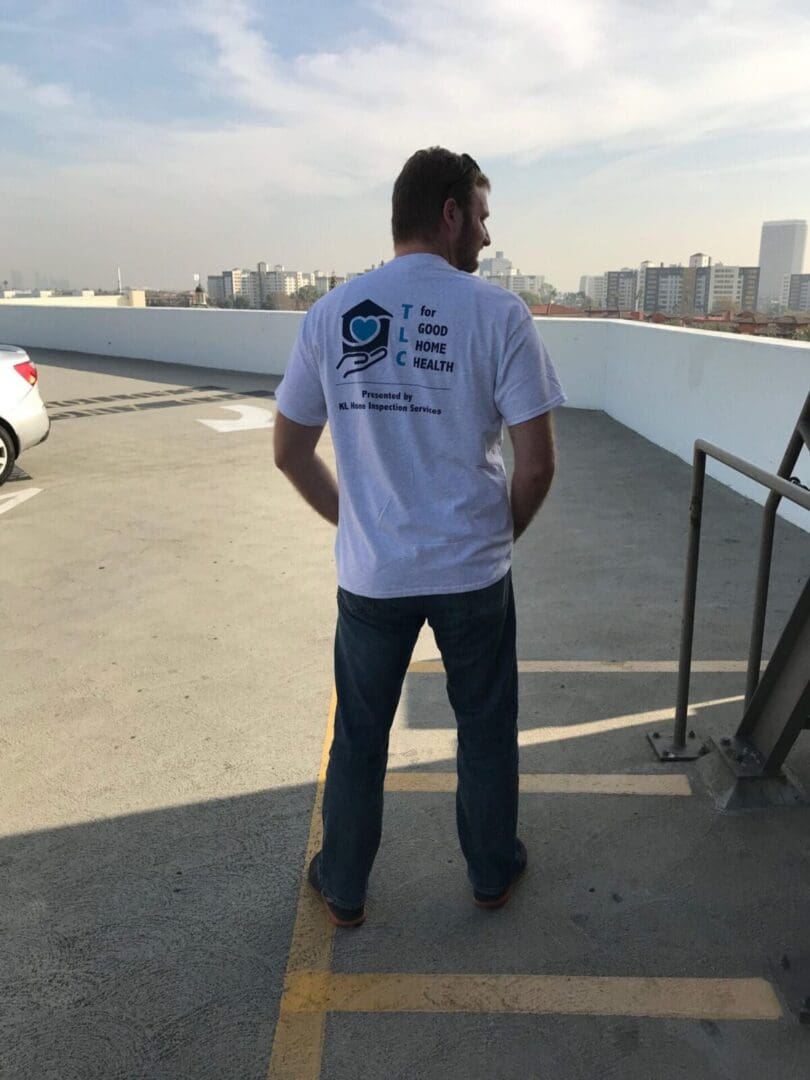
I received a phone call from our son Matthew, he lives in Los Angles. “Hey Dad, why don’t you install an under counter RO water filtration system?
So, you are probably saying to yourself, where is Brian going NOW, what is a RO system? Well, RO stands for a Reverse Osmosis.
A Little Back Ground
As you guys know, I was a senior construction manager for Pathmark. Our specification at the time was to install this water filtering system in the produce and fish departments. I knew it was a very effective system, but never considered it for my house, until NOW.
My answer to Matthew, “you know son, you are right. ” Thus, stay at home project #2 came about.
So, what is Reverse Osmosis, what does it filter out of our drinking water?
What is Reverse Osmosis?
Let’s start with regular osmosis. By definition, “osmosis is a process by which molecules of a liquid tend to pass through a semipermeable membrane from a less concentrated solution into a more concentrated one, thus equalizing the concentrations on each side of the membrane.” So, for example, freshwater and salt water are separated by a semi-permeable membrane (filter). The water naturally migrates through the membrane from the fresh water to the salty water until the water becomes equally salty on both sides.
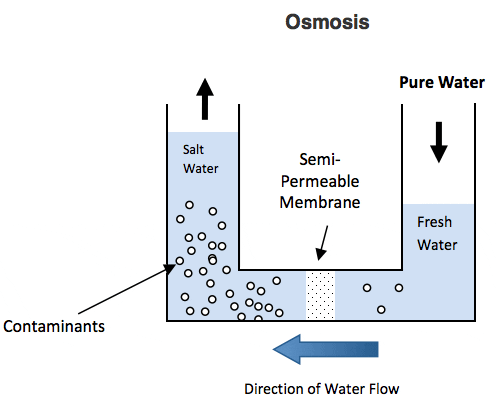
Reverse Osmosis

In reverse osmosis, pressure is exerted on the side with the salt solution to force the water molecules through the membrane to the freshwater side, thus removing unwanted contaminants which are caught by the Semi-permeable membrane(s).
What contaminants will a RO system remove?
Reverse Osmosis Systems will remove common chemical contaminants (metal ions, aqueous salts), including sodium, chloride, copper, chromium, and lead; may reduce arsenic, fluoride, radium, sulfate, calcium, magnesium, potassium, nitrate, and phosphorous.
On to the install of our RO system
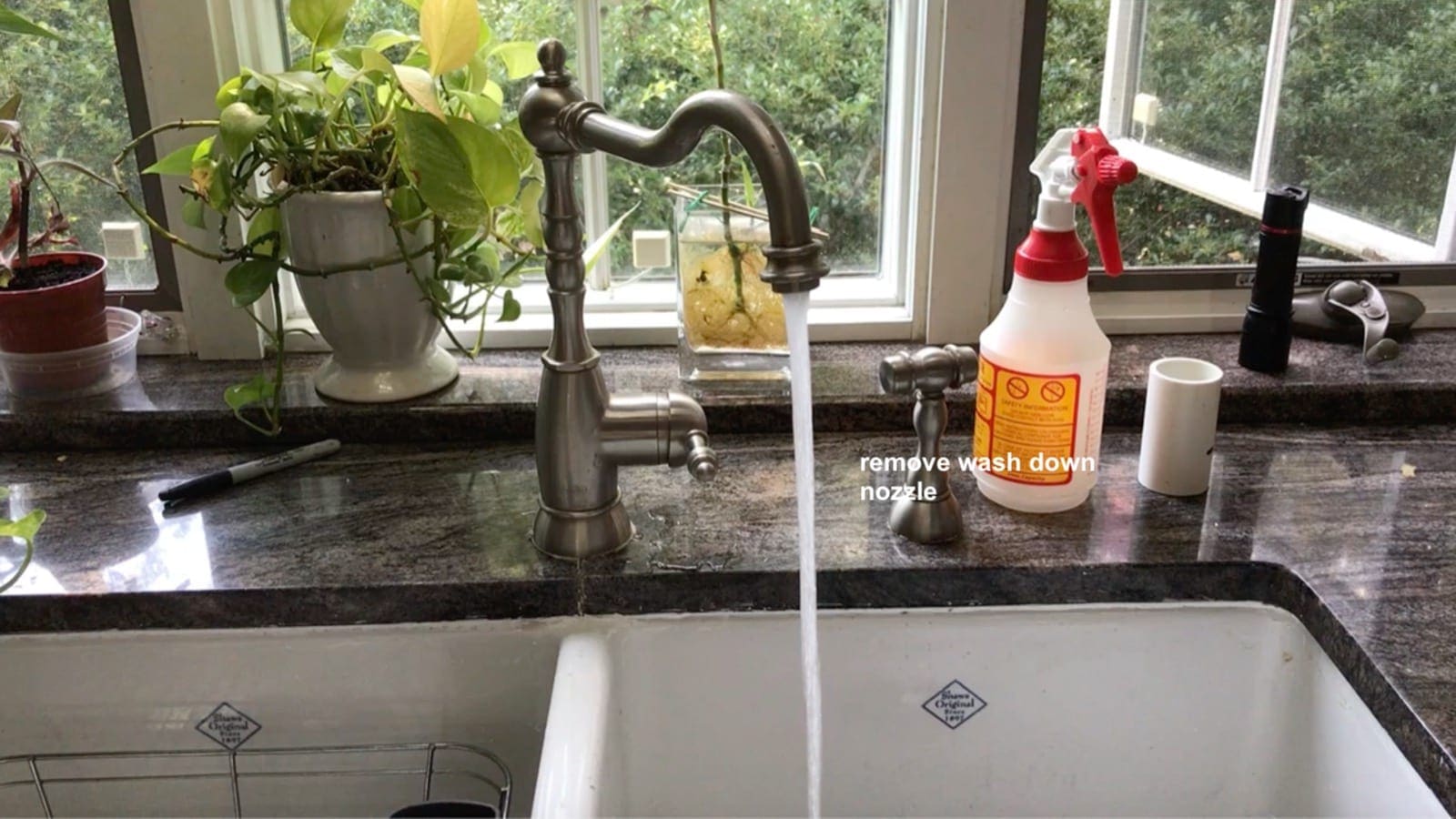
We hardly used the wash down nozzle, so Hope and I decided this was the perfect place for the new RO Nozzle. I really did not want to drill a hole into the granite.
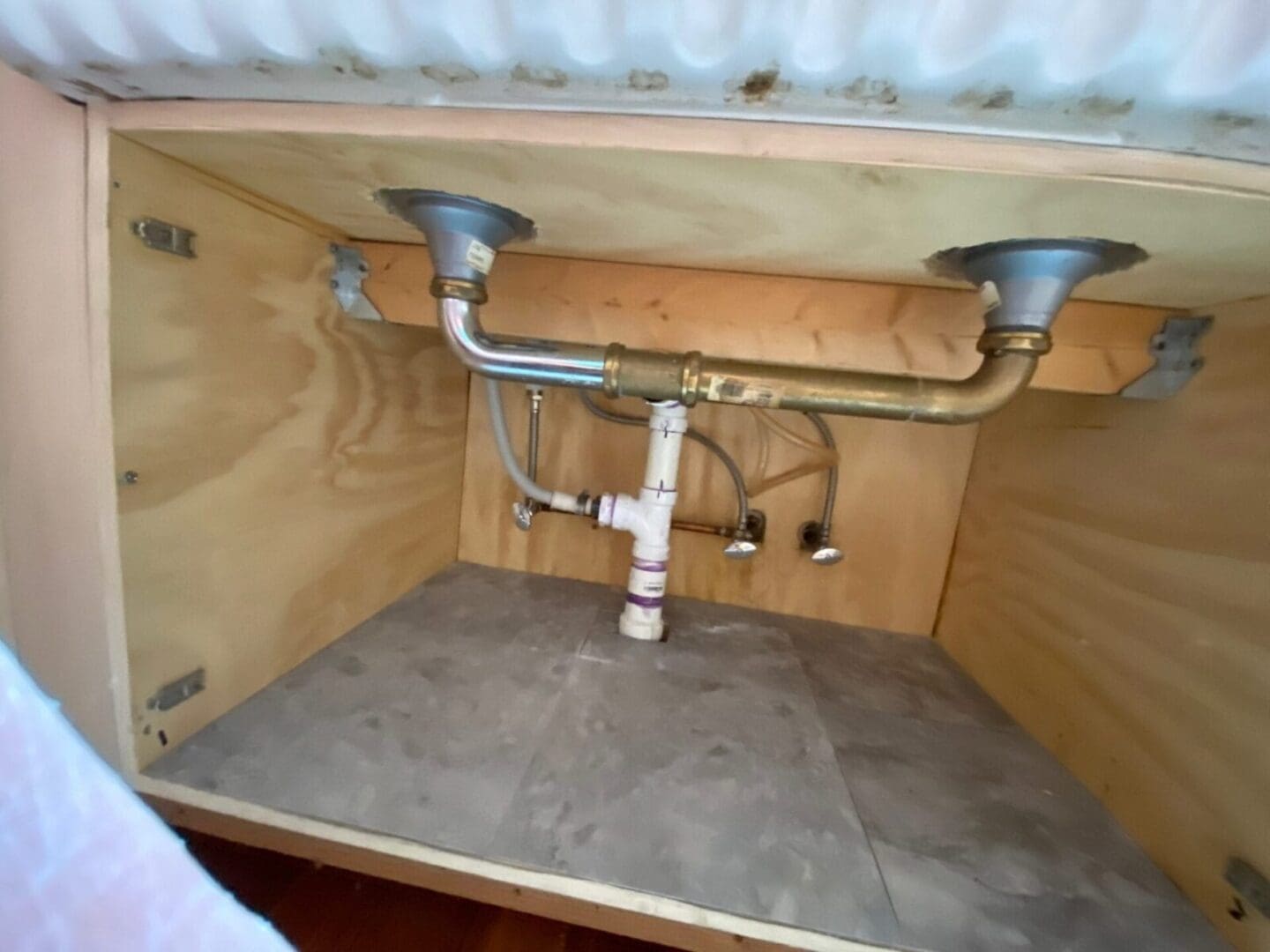
RO system
I emptied out all the stuff we were hiding in the cabinet. Great time to clean and organize!
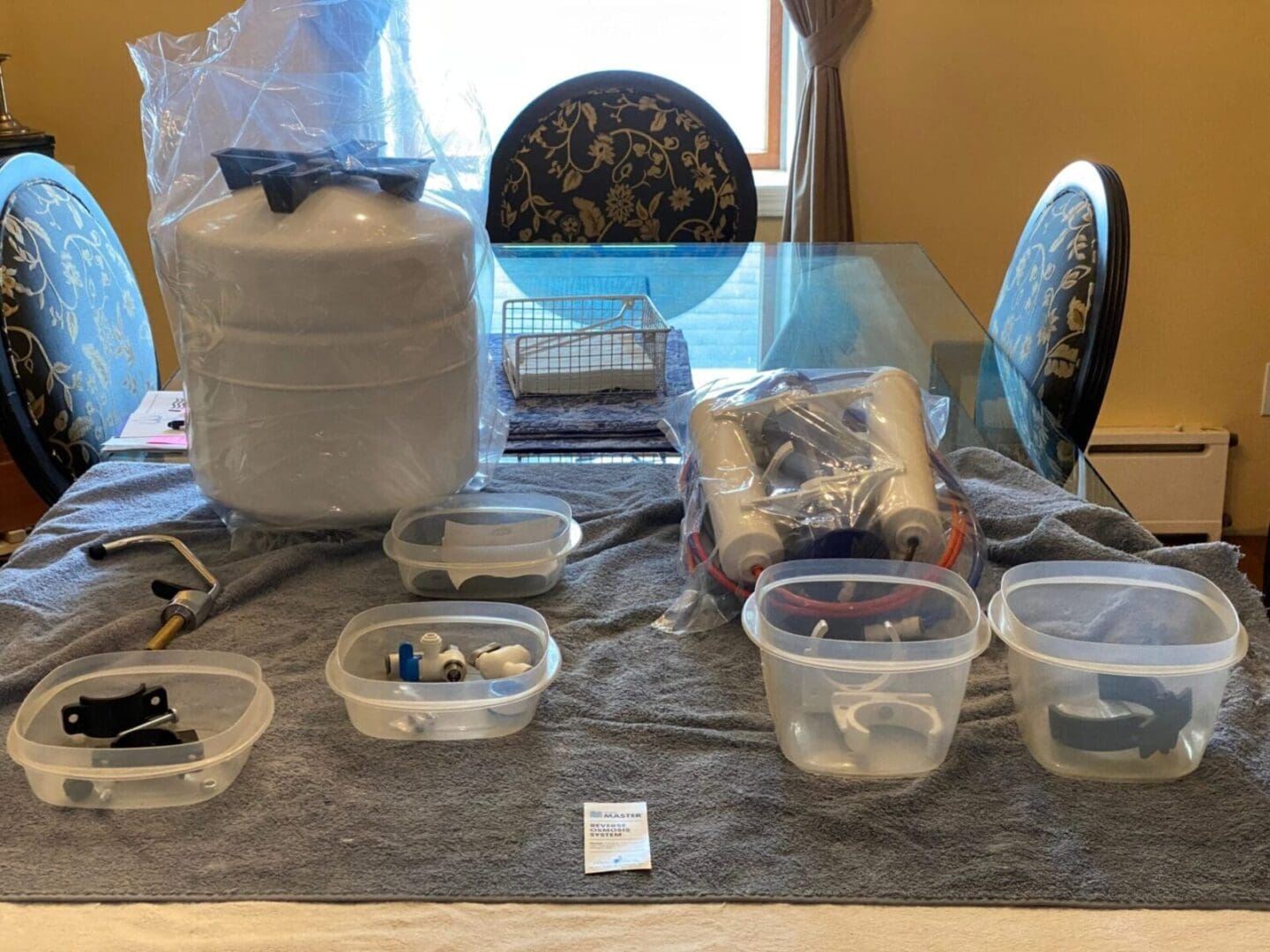
Whenever I do a project, I like to first get organized by placing the parts in containers and packing up my tool box. I do not want to make too many trips to the barn, (oh I forgot this and I forgot that).
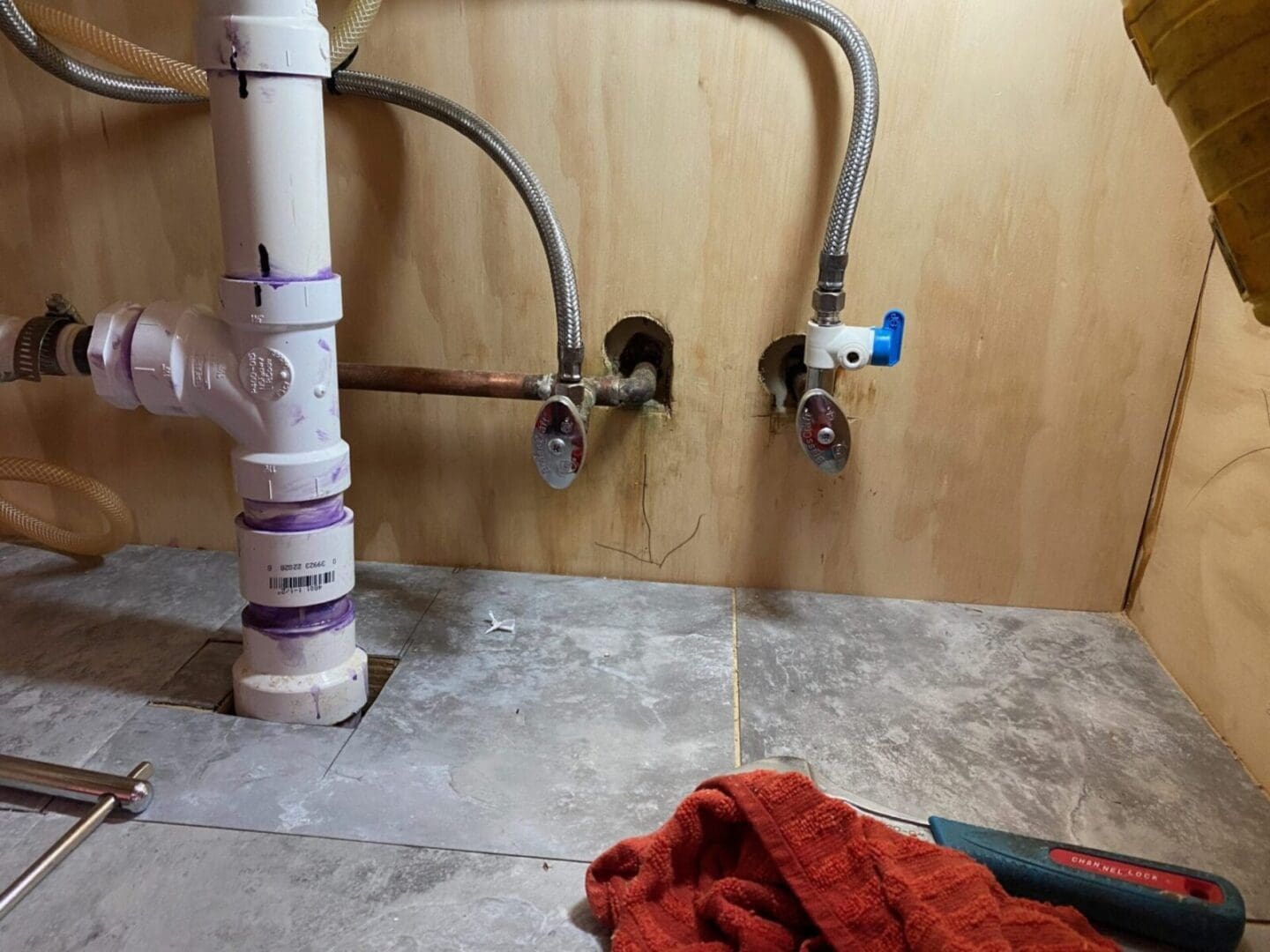
I installed the new water valve to the existing.
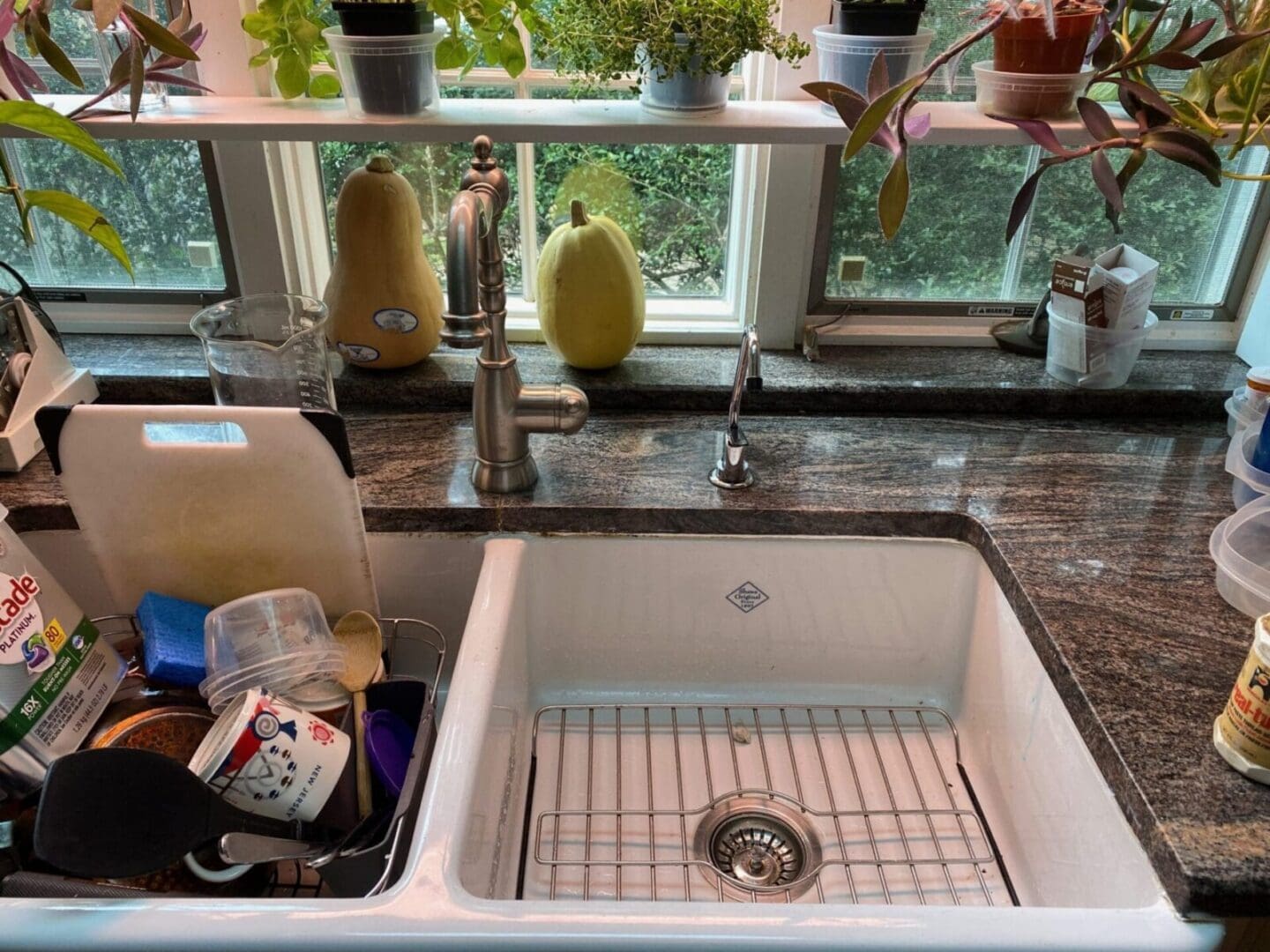
Installed the new RO faucet.

RO system installed- believe it or not, this was a (4) screw installation. All the components were installed at the factory. All I had to install was:
- Home Master RO (canisters and pipes) (2 screws) to cabinet
- Permeate pump. (2 screws) to cabinet
- 4 hoses (water feed, water drain, pipe to faucet, feed to water storage tank) to push-on connectors
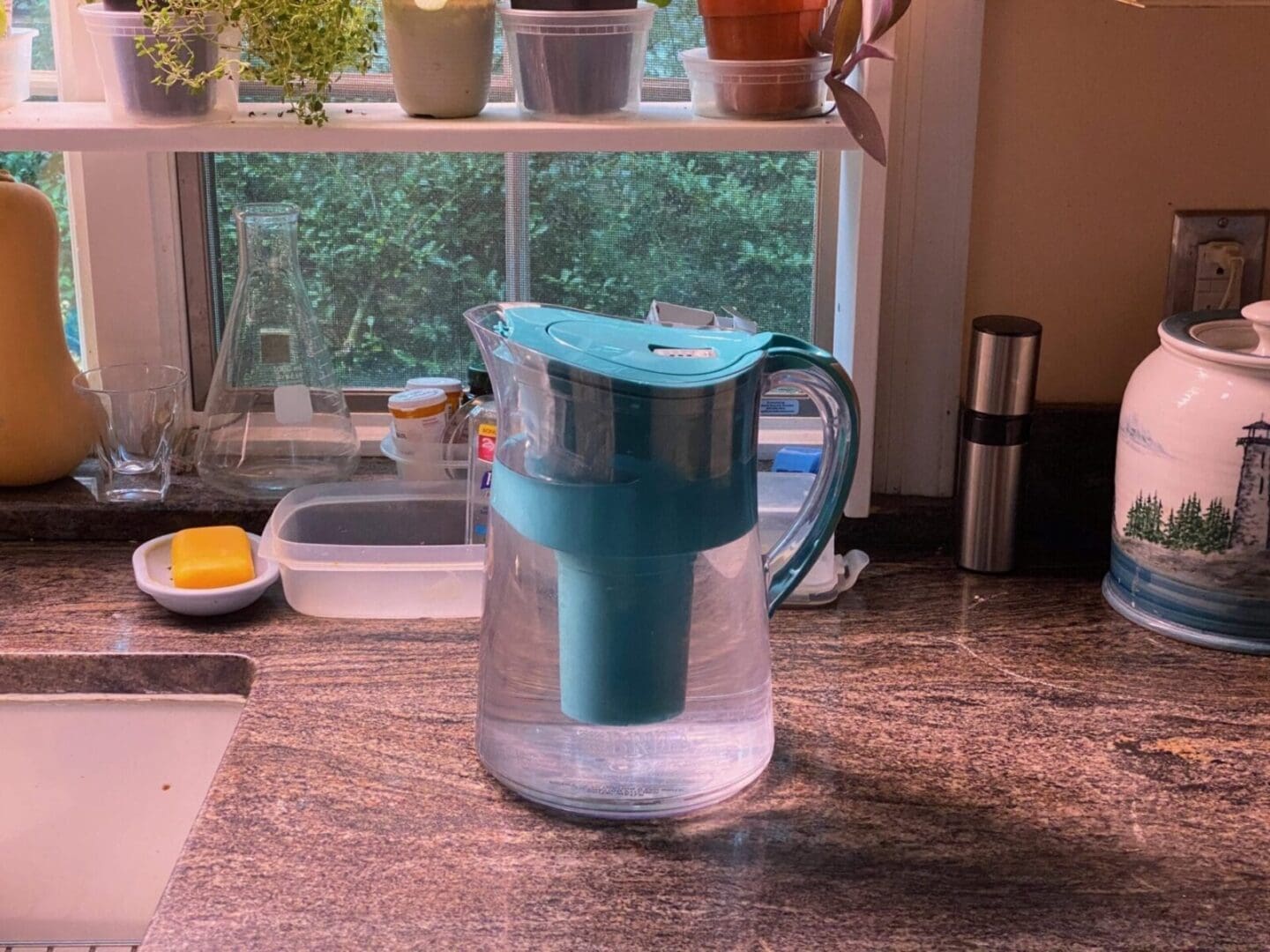
you know what this is 
completed RO system
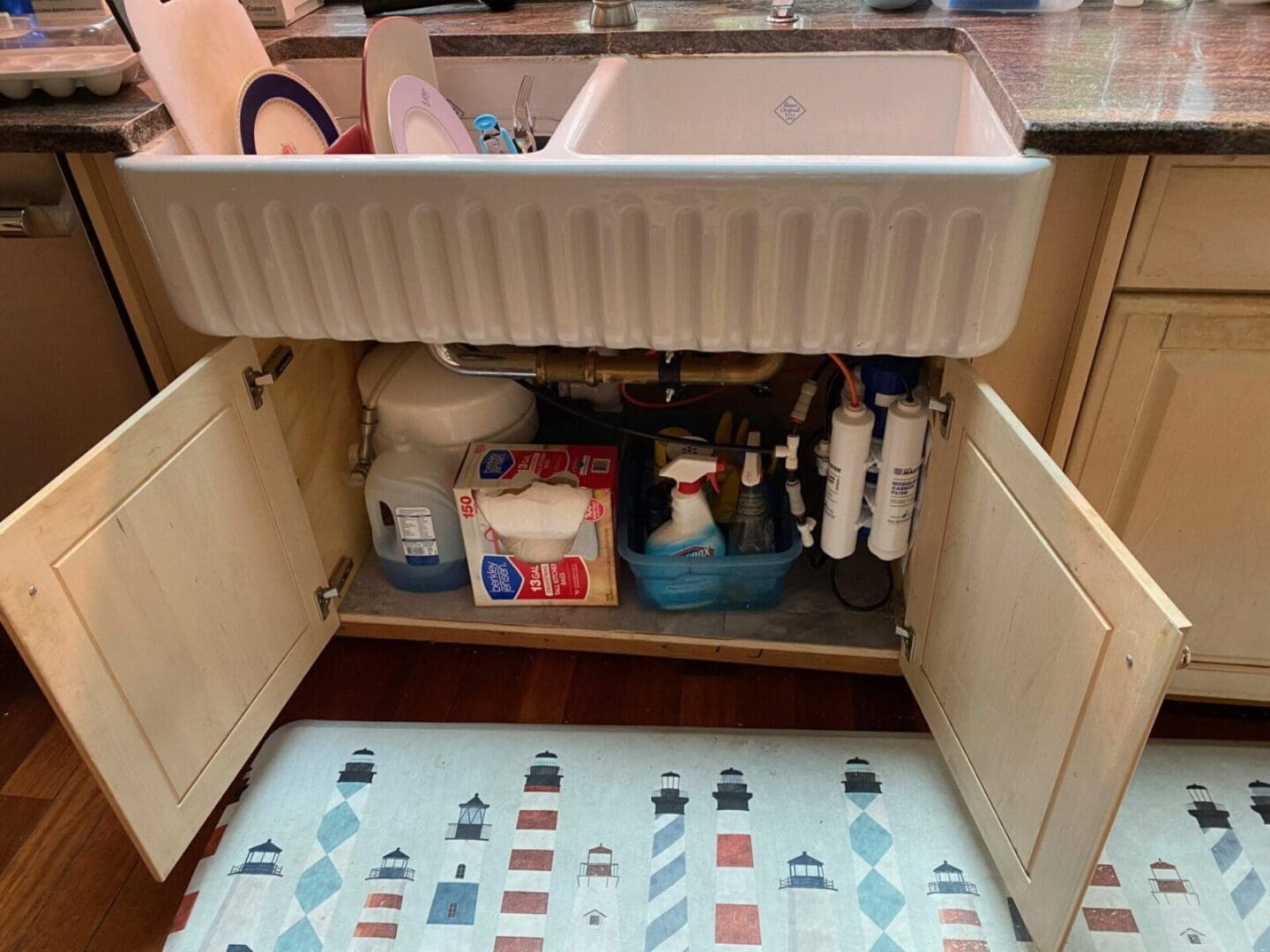
So, Hope said to me, “where are we going to put all the other stuff that used to be under the sink? Oh man, another project.
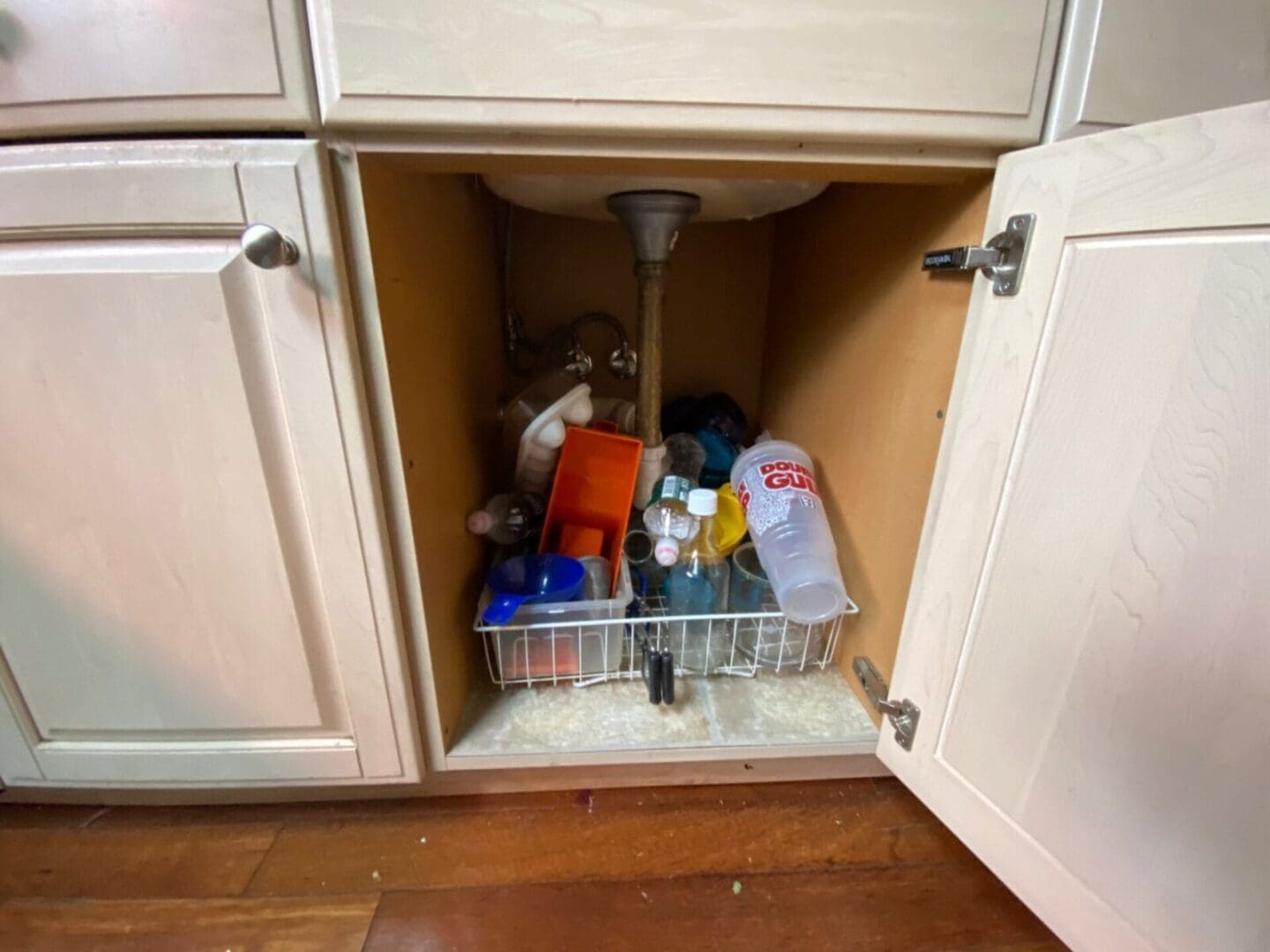
another cabinet to organize 
looks pretty clean now 
off the the barn 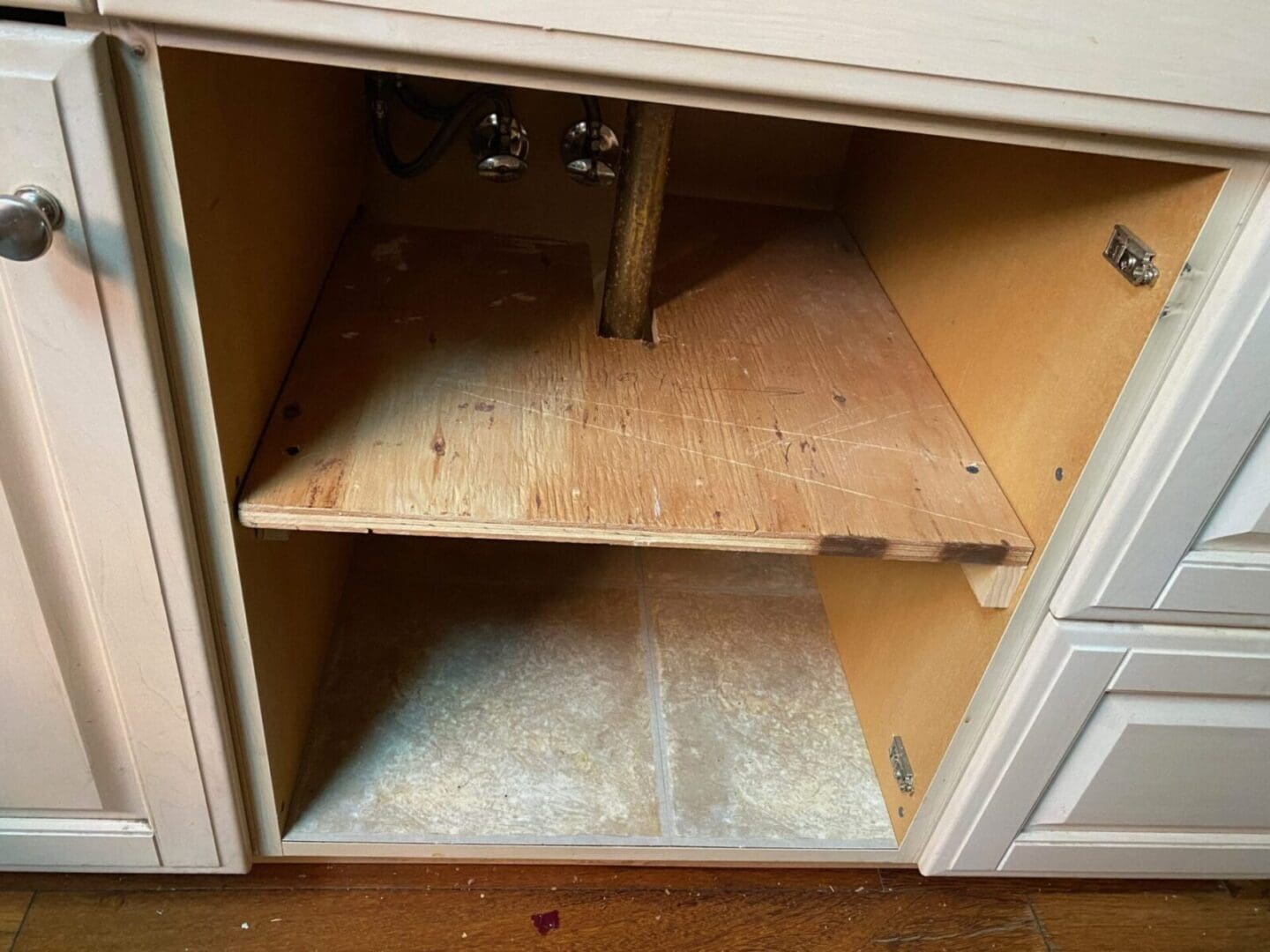
new shelf built and installed 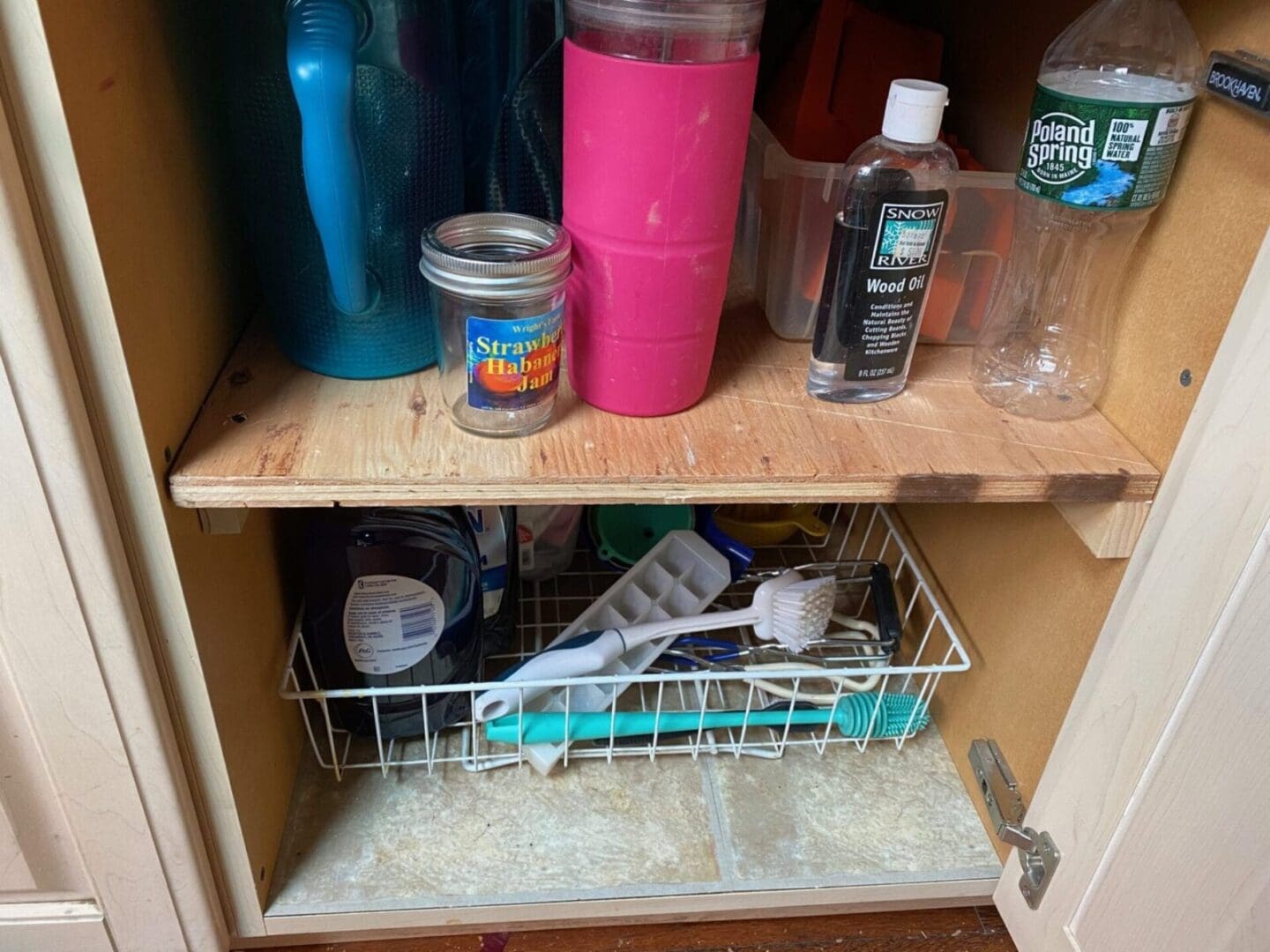
better organized
Facts:
The RO system water is only to be consumed. Washing vegetables, coffee (man my coffee tastes so much better), cooking, etc. Washing the dishes, we are still using the regular domestic water. I purchased The Home Master® Standard Reverse Osmosis Water Filtration System with Permeate Pump Loaded
TM-ERP-L. I bought it through Amazon. As always, this is just a suggestion guys.

Together We Can Do This

